The common fig tree has a long and colorful history around the world. Adam and Eve are depicted with leaves to cover themselves (it's the modesty shield of choice in works of art), and its fruits were Cleopatra's favorite treat. Native to the eastern Mediterranean, this tree has been cultivated and spread around the world. The common fig is a beautiful ornamental tree that can take on the profile of a very full shrub, depending on how you decide to prune it.
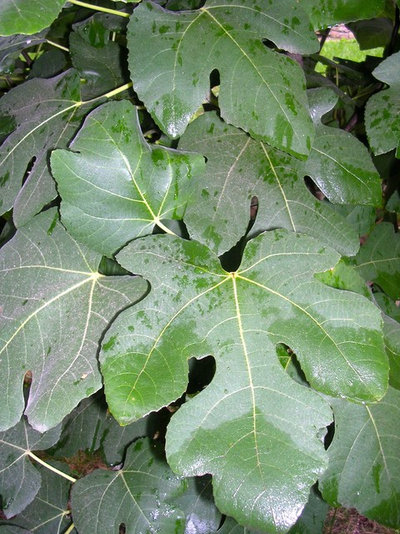 Botanical name
Botanical name:
Ficus carica and other varieties
Common name: Common fig
USDA zones: 7 to 11 (find your zone), depending on the specific variety and the microclimate where you place the tree
Water requirement: Average, though drought tolerant once the tree is established
Light requirement: Full sun at least eight hours per day
Mature size: Grows 10 to 30 feet high and wide
Benefits and tolerances: Once established, it's tolerant of drought and poor soil, but it does better in more fertile and well-drained soil. While it doesn't have many problems, look out for spider mites, aphids, rust and leaf rot.
Seasonal interest: Large leaves from spring through fall, showy fruit and a full form
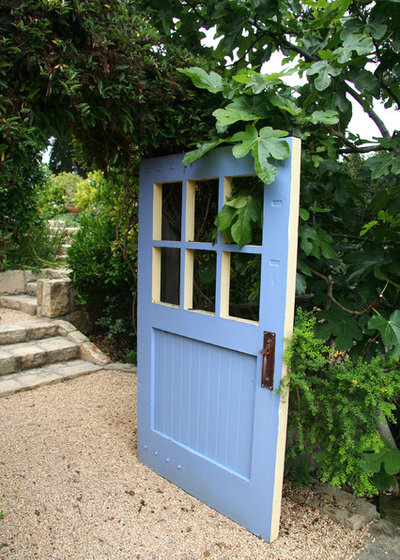
Donna Lynn - Landscape Designer
Distinguishing traits. These trees are known for the delicious figs, one of the world's first cultivated fruits on record.
The tree has a very full form; it's usually about as wide as it is high. You can prune it to be more treelike or more shrublike, depending on your preferences.
The fig tree also has very large palmate leaves with three or five lobes. The leaves grow to about 10 inches long by 8 inches wide.
When to plant: Fall or spring
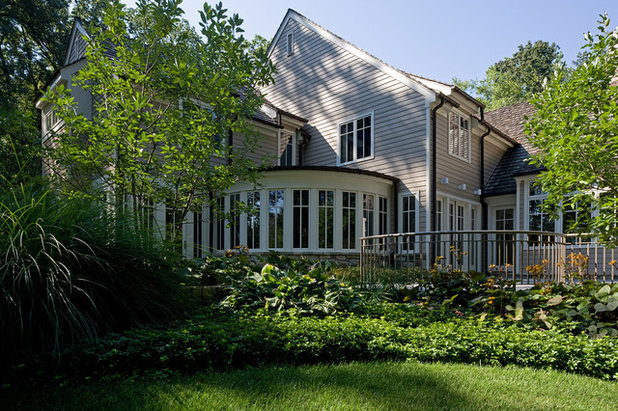
Penza Bailey Architects
How to use it. In the landscape, fig is a wonderful ornamental fruit tree that takes on the form of a very large shrub, averaging about 15 feet high by 15 feet wide. Use a single fig tree somewhere you'd like a nice full tree.
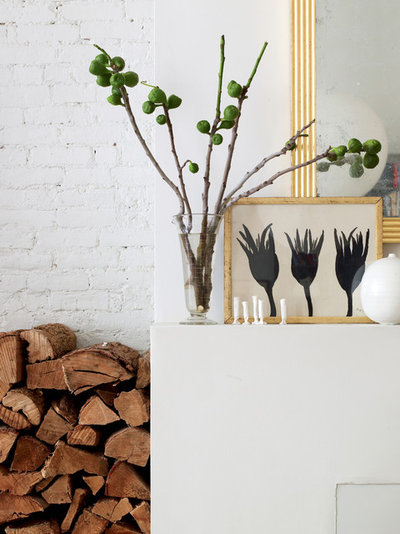
Rizzoli New York
My favorite fig use is on a gourmet cheese plate. But fig branches make a striking arrangement even when stripped of their beautiful leaves, as shown in the book
Bringing Nature Home.
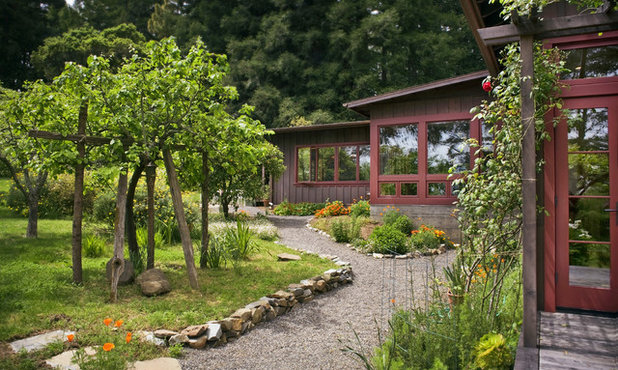
450 Architects, Inc.
Planting notes: - Plant in mid to late fall or early spring.
- Place the tree about 10 to 15 feet away from other plants to accommodate its wide spread.
- Dig a hole at least two times the size of the root ball.
- Place the root ball in the hole and fill the hole halfway with rich, organic soil.
- Add water and let it drain, then finish filling the hole with dirt.
- Add mulch around the tree but keep it off the trunk. This will help keep the moisture in.
- Keep the tree watered until it gets established but be careful not to overwater.
Browse more great design plants





